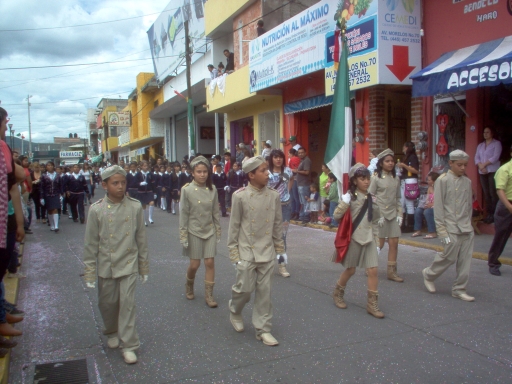
María Josefa Crescencia Ortiz Téllez-Girón de Dominguez
One of the very few women mentioned in Mexican history is Josefa Ortiz de Dominguez. She was born María Josefa Crescencia Ortiz Téllez-Girón on April 19, 1773, in Valladolid which is now known as Morelia, Michoacan. Her father, Juan José Ortiz Vasquez, a captain of Los Verdes regiment, was killed when she was an infant. Her mother, Manuela Téllez-Girón, died soon after. She was raised by her older sister, Maria Sotera Ortiz.
She attended the Colegio de las Vizcaínas in 1789. There she met her husband, Miguel Dominguez, a widower with 4 children, who had toured the school with a group of officials one day. They secretly married in 1791, less than a year after they met. Josefa was 18 years old and Miguel was 35.
In 1802, Miguel was appointed chief magistrate (Corregidor) of the city Queretaro and brought his growing family there to live. Josefa and Miguel’s married life was reported to be happy and they had 14 children together. Their children were Maria Ignacia (1792), J.M. Florencio (1793), Mariano (1794), Maria Dolores (1796), Miguel (1797), Maria Juana (1799), Maria Micaela (1800), Remigio (1801), Maria Teresa (1803), Maria Manuel (1804), Maria Ana (1806), J.M. Hilarion (1807), Maria Magdalena (1811) and Maria del Carmen (1812).

Josefa with fellow conspirators Hidalgo and Aldama.
Both Josefa and Miguel, despite his position, were sympathizers in the Mexican revolution movement. They often hosted political meetings attended by Miguel Hidalgo and Ignacio Allende, and aided in the collection of weapons. The revolution was planned for December 8, 1810, however, on September 13, the plot was betrayed.
Josefa’s husband Miguel was ordered to apprehend the revolutionaries. He locked Josefa in her room to keep her out of harm’s way and prevent her from warning the other. She still managed to get a message out, pieced together with cut out letters from printed text to hide her involvement. This message was eventually taken to Miguel Hidalgo who subsequently moved the date of the revolution up and gave his rousing speech in Dolores (El Grito de Dolores) in the evening of September 15.
On September 16, both Josefa and her husband were arrested. Miguel, because of his government position, was released the following day. However, Josefa (known as La Corregidora) was not released until October 22, 1810. She was pregnant with her daughter Maria Magdalena (born March 14, 1811) during her incarceration.
In December of 1813, Josefa’s husband turned her over to authorities for her role in the rebellion against Spain. She was confined to the Santa Clara Convent in Queretaro for a time, then sent to Mexico City to stand trial. She was found guilty and sent to the Santa Teresa Convent. She was released into her husband’s custody in April 1814 because of poor health. She miscarried her 15th child shortly after her release.
She was arrested again on December 22, 1815, and sent to the Santa Catalina de Sena Convent. She was finally released on June 17, 1817, after swearing an oath that she would no longer participate in any acts of rebellion against the Spanish crown.
She died from pleurisy on March 2, 1829, in Mexico City. Her patriotic acts and sacrifices earned her a place in the roll call of El Grito Mexicano recited each year during the Independence celebrations. ¡Viva Josefa Ortiz de Dominguez!
*****
Do you want to learn more about Mexican holidays and traditions?
Then check out A Woman’s Survival Guide to Holidays in Mexico!















